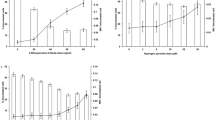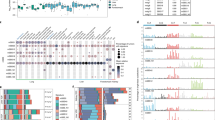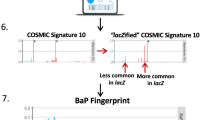Abstract
THE development of in vitro cell culture systems in which healthy cells can be transformed (converted to malignant cells) by chemicals, and detailed studies of the interaction of chemical carcinogens (or their activated forms) and cells, have aided the study of chemical carcinogenesis. In vitro chemical transformation of various rodent cells has been well established1–3. Many attempts have been made to transform various cultured normal or genetically abnormal human cells with chemical carcinogens without success4,5. We have tried to transform human cells from both normal and abnormal individuals and as has been the experience of others, have failed to observe any changes in such cultures. Therefore, the possibility of using continuous lines of human sarcoma cells for chemical transformation was investigated, since certain human sarcoma cell lines are susceptible to transformation by both DNA and RNA tumour viruses6–8. This communication reports results of experiments showing that human osteosarcoma clonal cells can be transformed in vitro by N-methyl-N′-nitro-N-nitrosoguanidine (MNNG), a known potent carcinogen9,10 and that these transformed cells produced tumours when injected into NIH nude athymic mice.
This is a preview of subscription content, access via your institution
Access options
Subscribe to this journal
Receive 51 print issues and online access
$199.00 per year
only $3.90 per issue
Buy this article
- Purchase on Springer Link
- Instant access to full article PDF
Prices may be subject to local taxes which are calculated during checkout
Similar content being viewed by others
References
Berwald, Y., and Sachs, L., J. natn. Cancer Inst., 35, 641–661 (1965).
DiPaolo, J. A., and Donovan, P. J., Expl Cell Res., 48, 361–377 (1967).
Chen, T. T., and Heidelberger, C., J. natn. Cancer Inst., 42, 915–925 (1969).
Leith, R. S., and Hayflick, L., Proc. Am. Ass. Cancer Res., 15, 86 (1974).
Dietz, M. H., and Flaxman, B. A., Cancer Res., 31, 1206–1209 (1971).
MacPherson, I., Adv. Cancer Res., 13, 169–215 (1970).
McAllister, R. M., et al., Nature new Biol., 230, 279–282 (1971).
Klement, V., Freedman, M. H., McAllister, R. M., Nelson-Rees, W. A., and Huebner, R. J., J. natn. Cancer Inst., 47, 65–73 (1971).
DiPaolo, J. A., Takano, K., and Popescu, N. C., Cancer Res., 32, 2686–2695 (1972).
Heidelberger, C., Fedn Proc., 32, 2154–2161 (1973).
McAllister, R. M., et al., Cancer, 27, 397–402 (1971).
Rhim, J. S., Cho, H. Y., and Huebner, R. J., Int. J. Cancer, 15, 23–29 (1975).
Nelson-Rees, W. A., Flandemeyer, R. R., and Hawthrone, P. K., Int. J. Cancer, (in the press).
MacPherson, I., and Stoker, M. G., Virology, 16, 147–151 (1962).
Todaro, G. J., and Green, H., J. Cell Biol., 17, 299–313 (1963).
Aaronson, S. A., and Todaro, G. J., Science, 162, 1024–1026 (1968).
Henderson, E. E., Norin, A. J., and Strauss, B. S., Cancer Res., 35, 358–363 (1975).
Author information
Authors and Affiliations
Rights and permissions
About this article
Cite this article
RHIM, J., PARK, D., ARNSTEIN, P. et al. Transformation of human cells in culture by N-methyl-N′-nitro-N-nitrosoguanidine. Nature 256, 751–753 (1975). https://doi.org/10.1038/256751a0
Received:
Accepted:
Issue Date:
DOI: https://doi.org/10.1038/256751a0
This article is cited by
-
Research models and mesenchymal/epithelial plasticity of osteosarcoma
Cell & Bioscience (2021)
-
Does rarity mean imparity? Biological characteristics of osteosarcoma cells originating from the spine
Journal of Cancer Research and Clinical Oncology (2017)
-
Morphologic characterization of osteosarcoma growth on the chick chorioallantoic membrane
BMC Research Notes (2010)
-
Beta4 integrin promotes osteosarcoma metastasis and interacts with ezrin
Oncogene (2009)
-
fau and its ubiquitin-like domain (FUBI) transforms human osteogenic sarcoma (HOS) cells to anchorage-independence
Oncogene (2003)
Comments
By submitting a comment you agree to abide by our Terms and Community Guidelines. If you find something abusive or that does not comply with our terms or guidelines please flag it as inappropriate.



